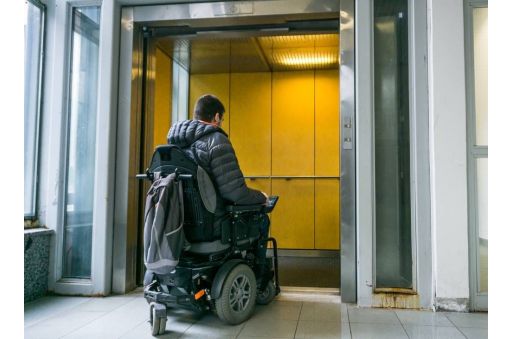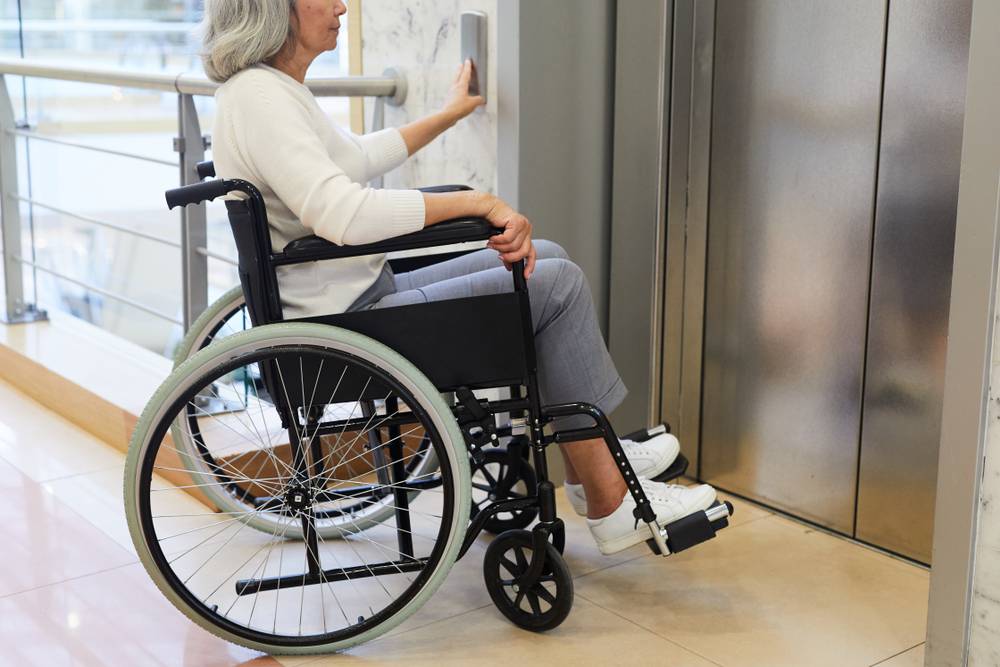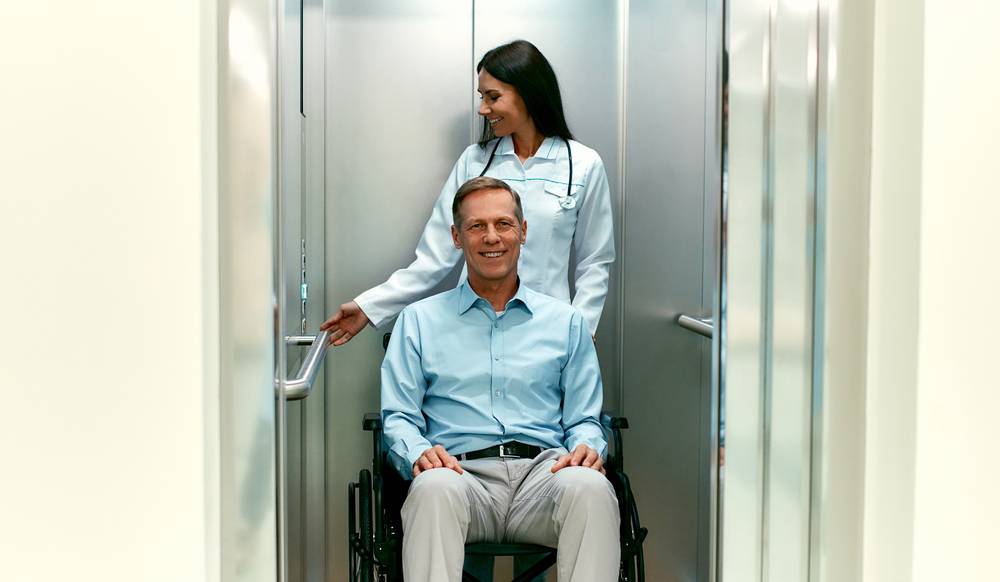
What Is the Best Way to Move a Wheelchair onto an Elevator?
Moving a wheelchair onto an elevator requires careful preparation and caution to ensure the safety of the wheelchair user. Facing the wheelchair outward, checking for adequate clearance, pressing elevator buttons early, and cautiously wheeling in once the doors reopen fully allow for the smoothest, least risky elevator access. Let’s get the hang of the best way to move a wheelchair onto an elevator and common mistakes to avoid.
Background on Wheelchairs and Elevators
Millions of Americans rely on manual and electric wheelchairs for daily mobility and independence. Meanwhile, the Americans with Disabilities Act sets standards for elevator design to accommodate wheelchairs, including minimum interior sizes and door widths. However, the confined space of most elevators paired with closing doors that open and shut rapidly can pose hazards. Thresholds, small capacities, and sudden stops also complicate the process of pulling the wheelchair into the elevator. Careful preparation is key for wheelchair users to avoid accidents or interference with other people when accessing elevators.

Preparation Before Entering the Elevator
Facing the Wheelchair Outward
Turning the wheeling chair to face directly toward the elevator doors provides greater maneuverability when you want to enter an elevator and then exit it. Wheeling backward or sideways limits control and increases the chances of bumping walls or other passengers. Forward-facing allows the wheelchair user to best navigate the tight space.
Checking Sufficient Clearance
Before approaching the elevator, examine the model’s listed weight capacity and interior dimensions. Verify that the wheelchair and user combined fall within safe limits and that there will be adequate room to fully enter and turn around. Ensure the threshold is low enough for easy access and the route has no obstructions to push the wheelchair smoothly.
Pressing Buttons Early
After summoning the elevator, press buttons for the desired floor while waiting beside the doors before attempting to wheel inside. Reaching to hit buttons while partway through the doors risks accidental contact, which could reopen doors prematurely.
Entering the Elevator
Waiting for Doors to Completely Reopen
Wheelchairs require more entry time, given their larger turning radius. When elevator doors start to reopen, pause before you move the wheelchair to verify they open their widest. Doors that only partially reopen increase the chances of collisions with door frames or being caught in quickly closing doors.
Carefully Crossing the Threshold
Elevators typically have a small bump along the doorway threshold, which requires slowly rolling up and over. Approaching thresholds quickly or at odd angles risks tipping wheelchairs. Carefully assess and navigate the threshold bump while controlling momentum.
Wheeling to the Back
After clearing the doorway, wheel toward the back wall to allow room for additional passengers and prevent blocking door sensors. But avoid leaning against or holding the door open buttons excessively to be respectful to other people.
Avoiding Door Close Buttons
Until safely and completely inside, wheelchair users should steer clear of door control buttons near the entrance. Accidentally bumping buttons could cause doors to immediately begin closing and trap wheelchairs partway.

Troubleshooting Issues
Handling Doors Closing Too Soon
If elevator doors start closing before safely through, firmly ask others to press and hold door open buttons immediately. For less crowded or empty elevators, wheel out carefully and restart the entry process. Rushing out risks toppling over thresholds.
Entering Small Elevators
In smaller single-person elevators without room to fully turn around, wheel in slowly backward while checking for clearance, then carefully back into a corner once inside. Entering forward risks being unable to align exiting.
Getting Over High Thresholds
For excessively high thresholds, difficult to roll over solo, request a helping hand on both sides to tilt the wheelchair backward to raise the front wheels onto the threshold, then roll fully inside. Solo attempts risk abrupt stops and wheelchair tipping.
Proper Elevator Exiting Techniques
Orienting the Wheelchair
While inside, reposition the wheelchair to face the elevator doors in preparation for exiting. Backing out decreases control and risks not seeing obstructions outside. Position near buttons for easy access, but avoid holding them excessively.
Pausing Before Initial Exit
As elevator doors reopen, briefly pause and visually verify adequate room and lack of obstructions around the outside entrance. People often crowd directly in front of doors while awaiting elevators. Once conditions look clear, cautiously proceed forward.
Handling Doorway Traffic
Cross-traffic around elevator doors can also pose hazards while getting the wheelchair out of the elevator. Slow down on approach if others are entering from opposite sides and let them pass first. If groups block the exit route, politely request they stand aside for a second to allow the wheelchair to go out safely.
Common Mistakes to Avoid When Pushing a Wheelchair into an Elevator
Pushing wheelchairs hastily through closing elevator doors often causes accidents. Riders or assistants may try quickly shoving the wheelchair inside in an attempt to beat the doors before they shut completely. However, this sudden momentum results in the wheels or footrests catching on the elevator frame or threshold bump, leading to tipping over. Likewise, when exiting an elevator, some people may impatiently wheel out as fast as possible through doors that have barely opened. This frequently leads to jolting collisions with individuals waiting right outside the elevators.
Elevator doors themselves can also pinch users or damage wheelchair parts if dashed through without room to spare. It cannot be emphasized enough - safely clearing elevator doors requires gently paced, controlled movements with ample time for full openings and closings. Proper timing and care prevent accidents.
Check the next step on how to get a wheelchair into a car explained in our previous post.
Conclusion
From thoroughly surveying elevator dimensions to carefully controlling momentum over thresholds, countless factors impact wheelchair users' securely accessing elevators. Facing wheelchairs outward, pressing buttons early, giving ample time for doors to reopen, and watching for tripping hazards allow for smooth elevator entries and exits. With proper preparation and awareness, wheelchair users can safely use elevators while maintaining independence. The most substantial component is exercising caution and patience when navigating confined wheeling chair maneuvers.

